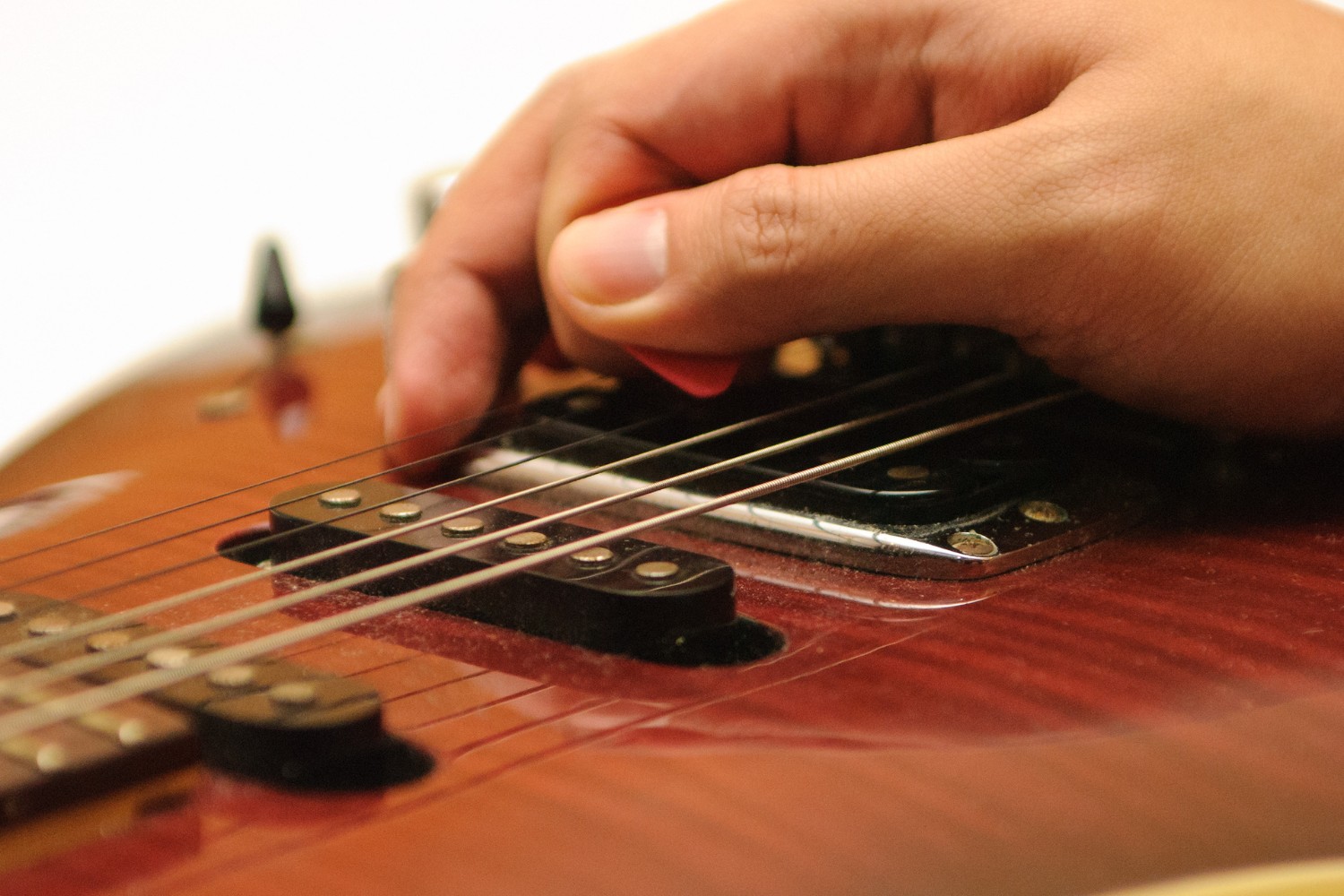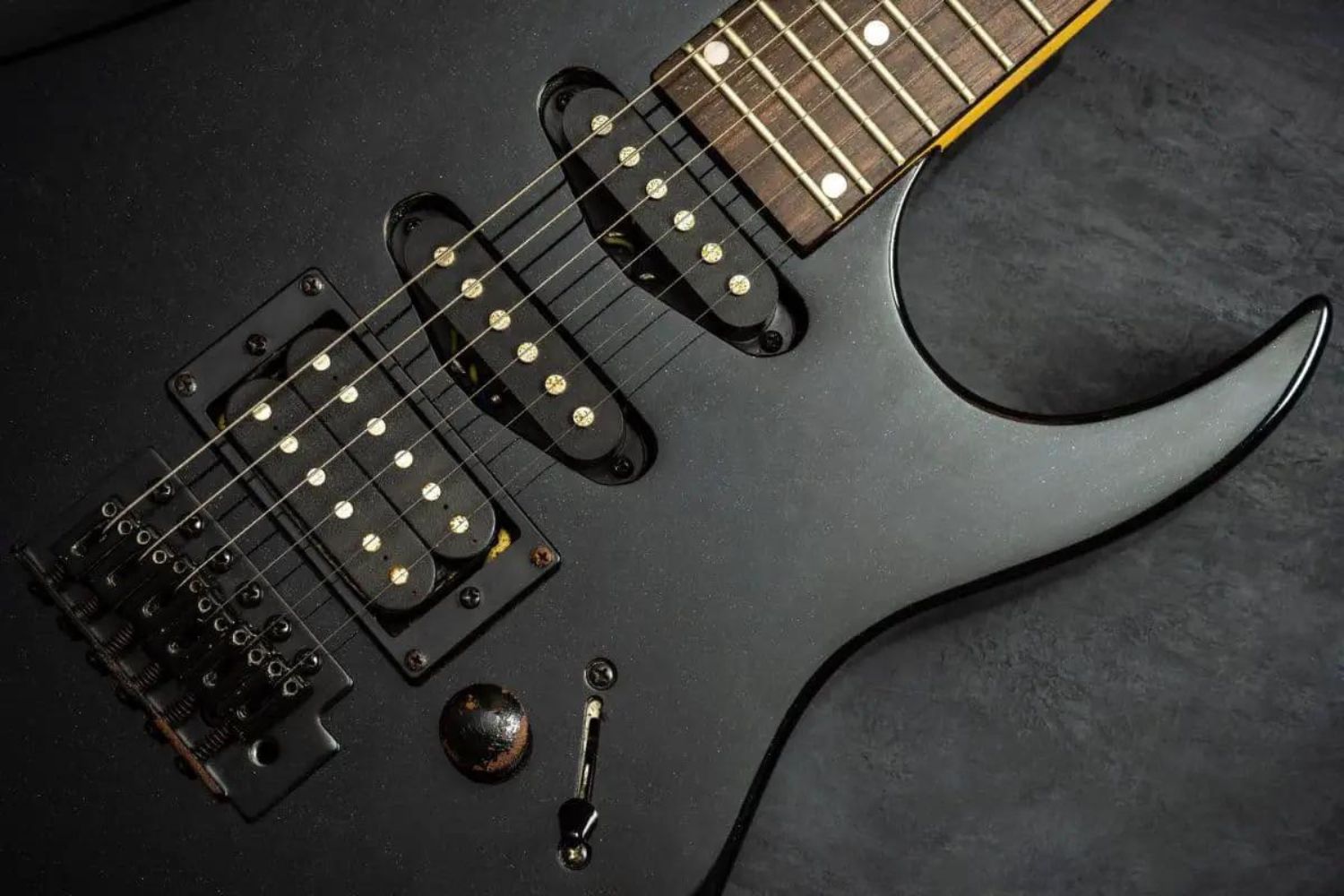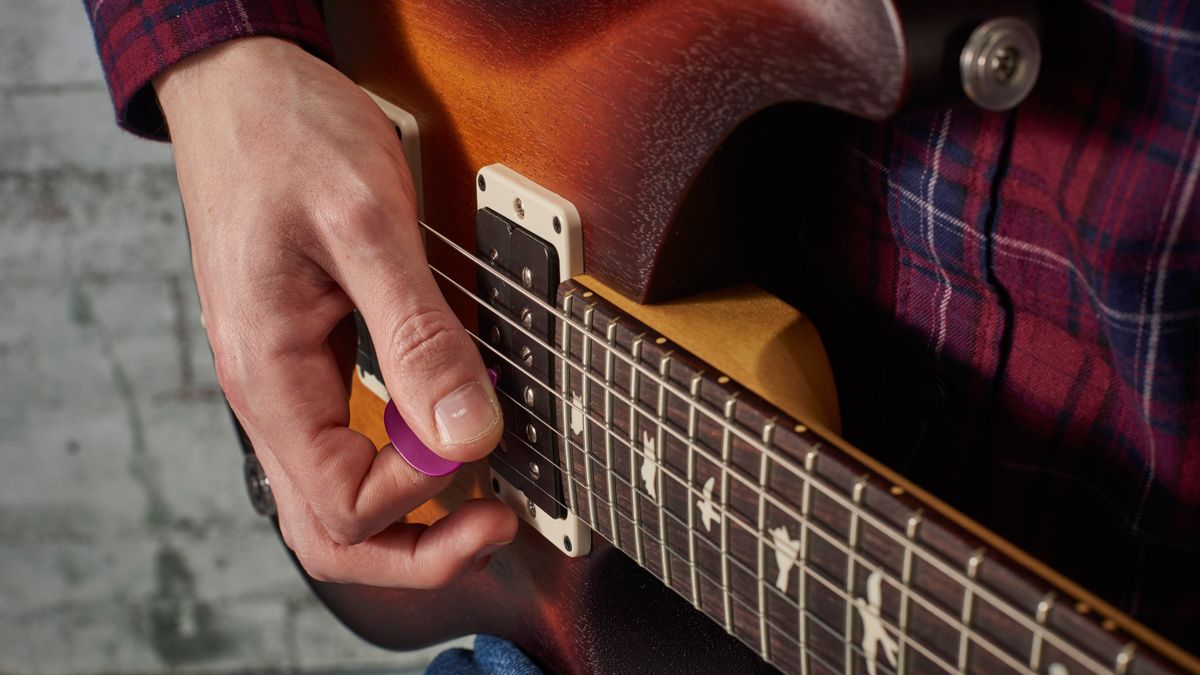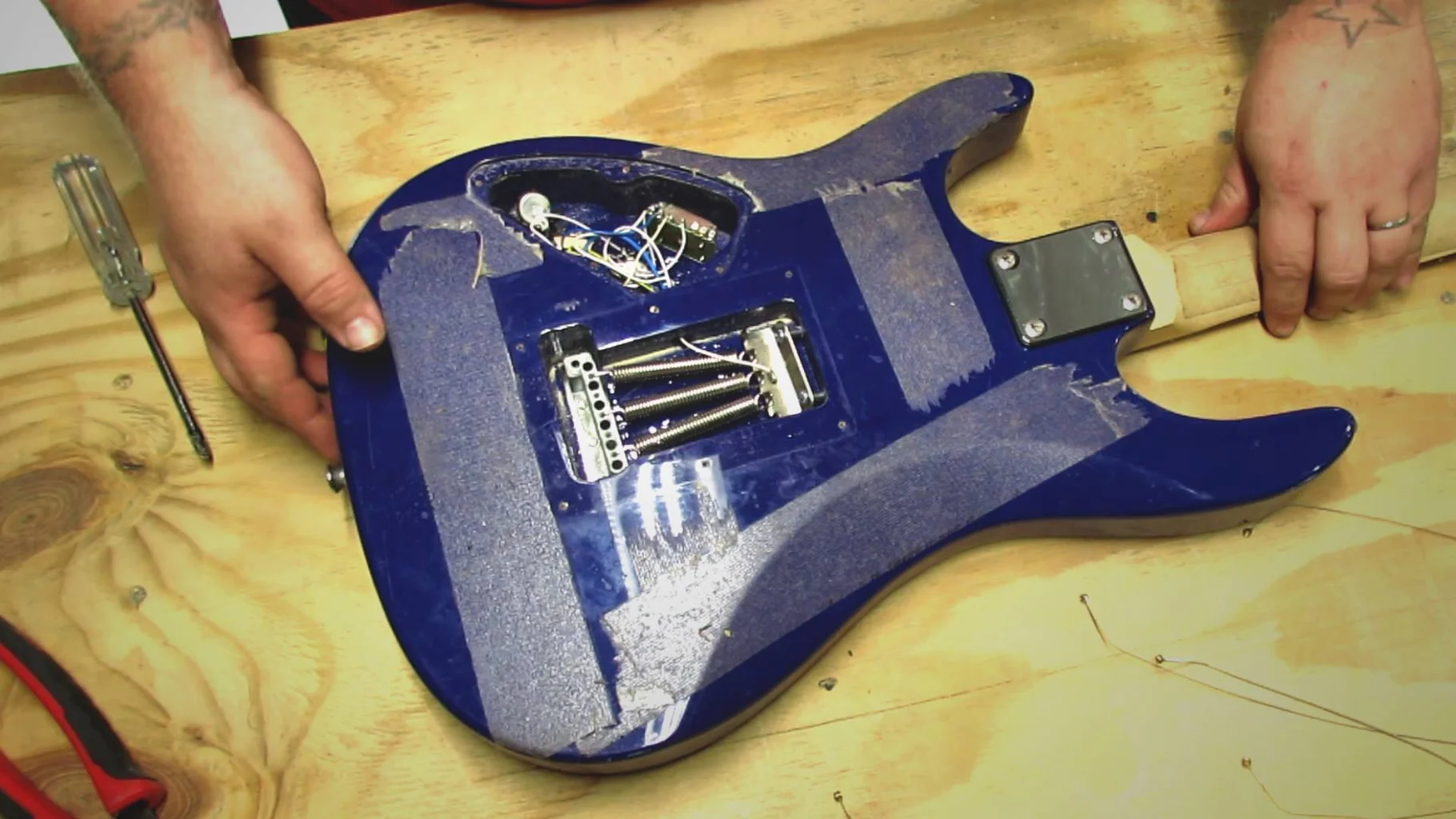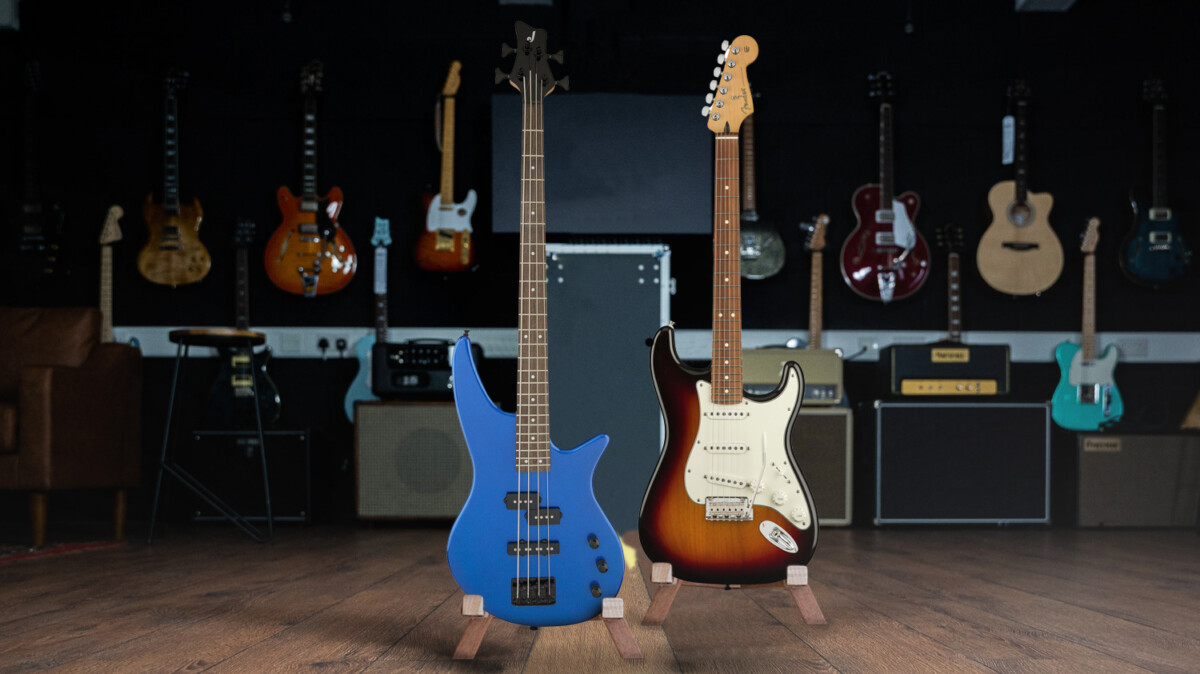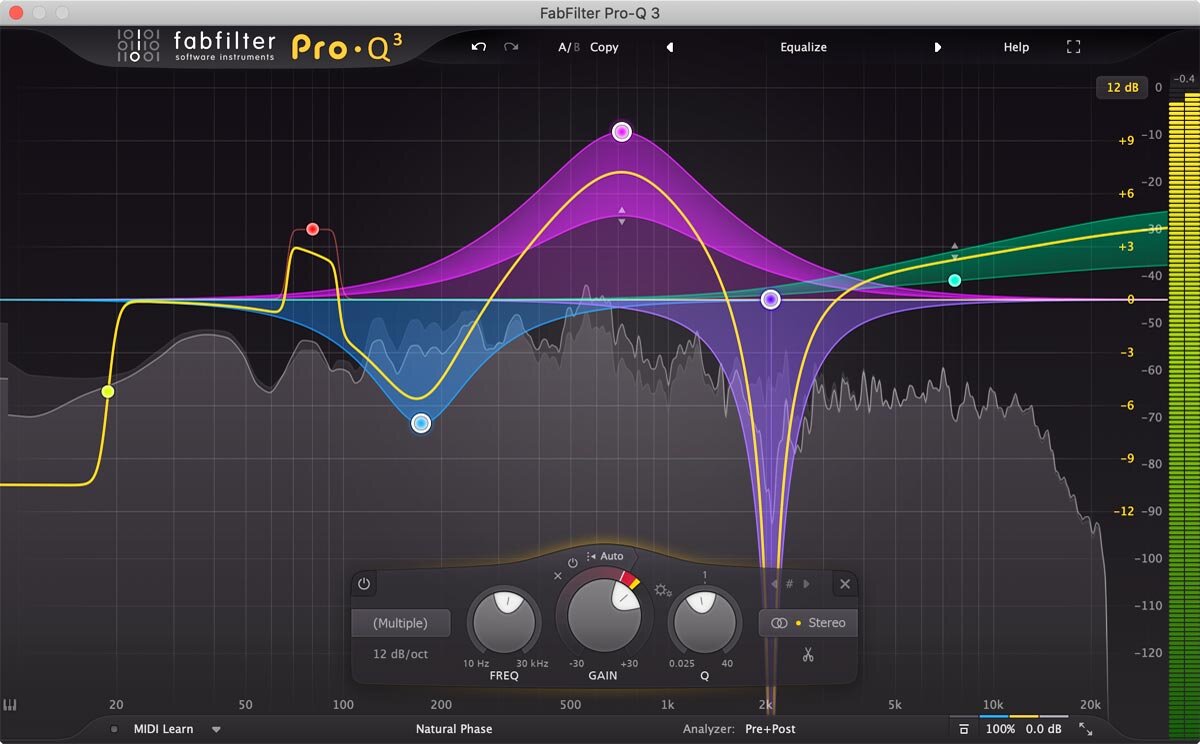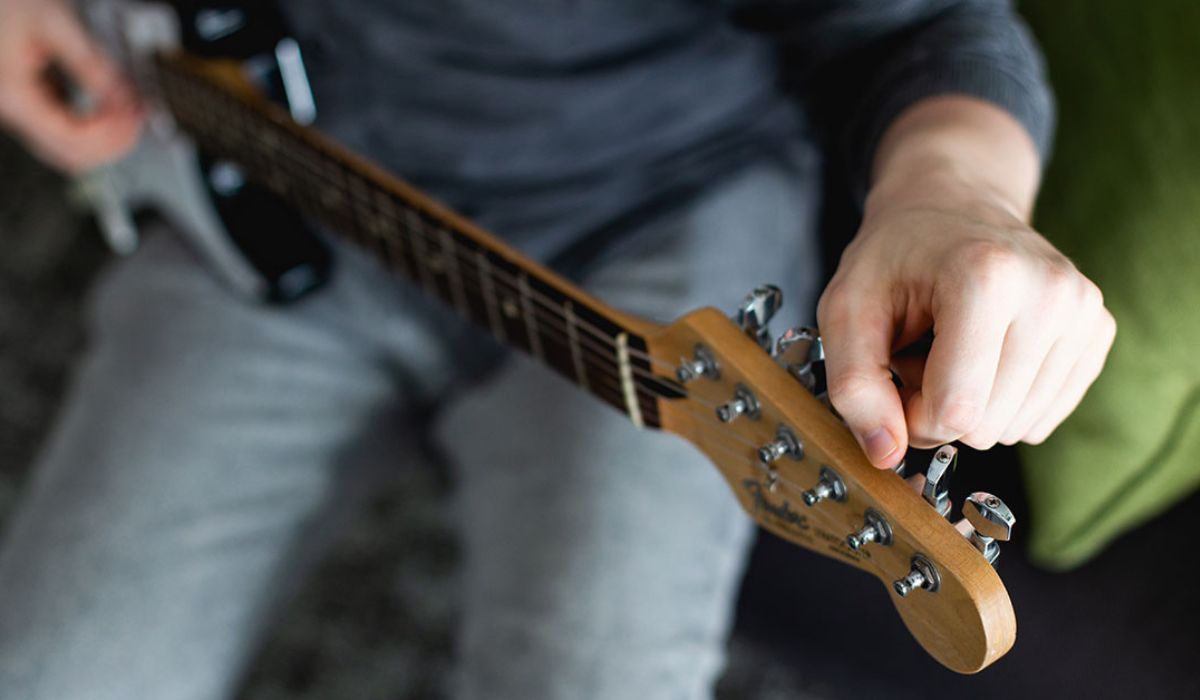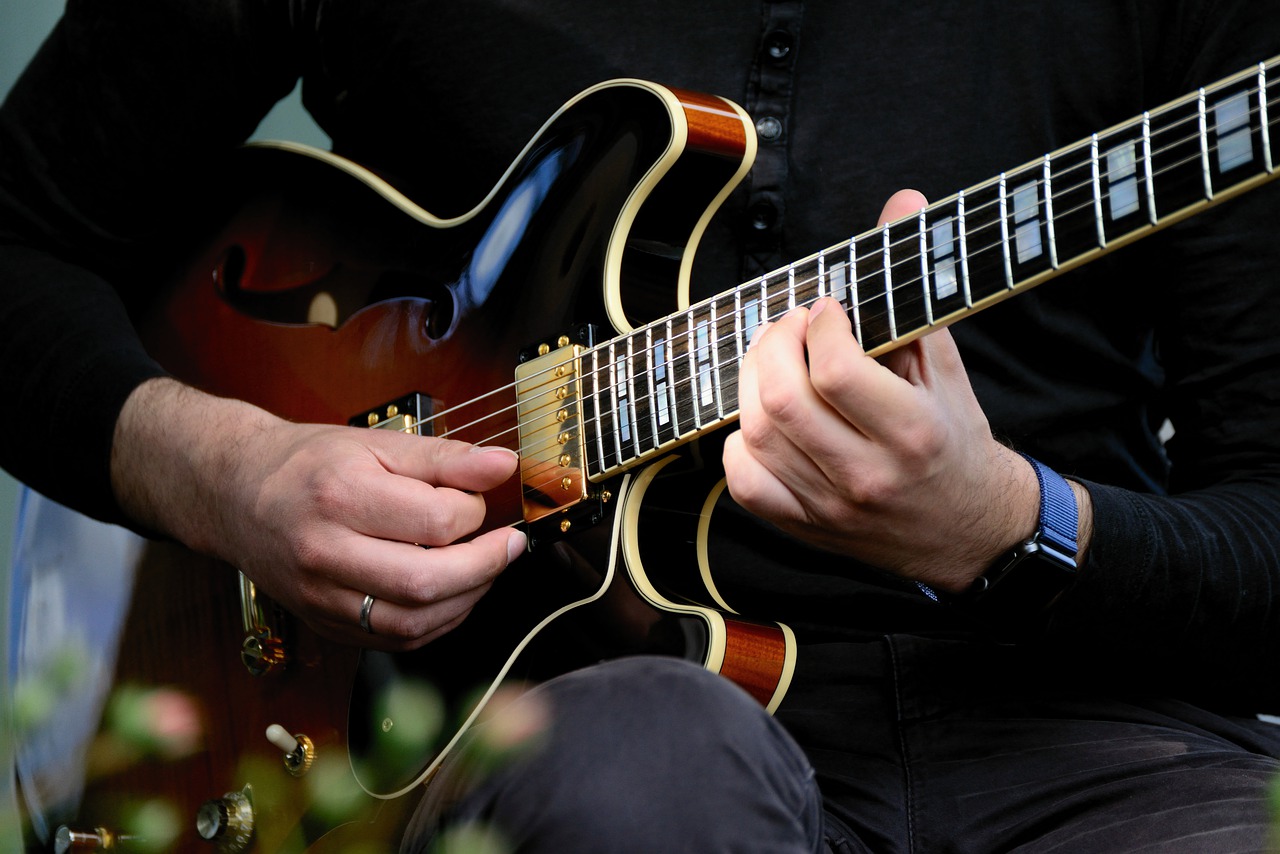Introduction
Playing the electric guitar is a thrilling experience, and mastering advanced techniques can take your skills to the next level. One such technique that adds depth and character to your playing is the art of pinch harmonics. Also known as artificial harmonics, this technique is widely used in rock, metal, and blues music to create unique and expressive sounds.
In this article, we will delve into the world of pinch harmonics, exploring what they are, how to execute them, and the common pitfalls to avoid. Whether you're a beginner looking to add flair to your playing or an intermediate guitarist aiming to refine your technique, mastering pinch harmonics can elevate your musical prowess and captivate audiences.
Understanding the intricacies of pinch harmonics and honing this skill can open up a world of sonic possibilities, allowing you to infuse your playing with emotion and intensity. By the end of this article, you'll have a comprehensive understanding of pinch harmonics and the tools to incorporate them into your repertoire with finesse and confidence. Let's embark on this musical journey and unlock the potential of the electric guitar through the magic of pinch harmonics.
What are Pinch Harmonics?
Pinch harmonics, often referred to as artificial harmonics, are a guitar playing technique used to produce harmonically rich and resonant tones. This method involves subtly pinching the guitar string with the pick and the side of the thumb or index finger, creating a harmonic overtone that adds a distinctive edge to the sound.
When executed effectively, pinch harmonics generate a high-pitched, ethereal quality, akin to the sound of a bell or chime. These harmonics are produced by lightly touching the string with the picking hand immediately after plucking it, causing the string to vibrate in segments and produce a higher-pitched overtone. The resulting sound is characterized by its piercing, bell-like quality, adding depth and emotion to the guitar’s timbre.
Pinch harmonics are integral to various musical genres, particularly in rock and metal, where they are used to infuse solos and riffs with a distinctive, expressive flair. The technique allows guitarists to create haunting, otherworldly sounds that cut through the mix and captivate listeners. By mastering pinch harmonics, guitarists can imbue their playing with a unique sonic signature, elevating their musical expression to new heights.
Understanding the physics behind pinch harmonics is crucial for aspiring guitarists. The technique relies on the concept of nodes and antinodes, where the string’s length is divided into segments that vibrate at different frequencies when touched at specific points. By pinpointing these nodes and employing precise picking and fretting techniques, guitarists can coax out harmonics that embellish their playing with an enchanting, almost vocal quality.
Pinch harmonics are an indispensable tool in a guitarist’s arsenal, offering a means to evoke raw emotion and intensity through nuanced manipulation of the instrument’s sound. As we delve deeper into the world of pinch harmonics, we’ll uncover the secrets to mastering this captivating technique and harnessing its evocative power.
Finding the Sweet Spot on the Guitar
Locating the sweet spot on the guitar is a pivotal aspect of mastering pinch harmonics. The sweet spot refers to the precise point along the string where executing a pinch harmonic yields the most resonant and vibrant overtone. As every guitar has its unique tonal characteristics, finding the sweet spot is an individualized process that requires attentive experimentation and keen observation.
To identify the sweet spot, begin by lightly fretting a note on the guitar neck, preferably on the 3rd to 5th fret for starters. As you pluck the string, use the pick to strike the string and immediately follow through with a subtle touch from the side of your thumb or index finger. Experiment with picking closer to the bridge, where the string tension is higher, and gradually move towards the neck until you discover the spot that produces the most pronounced and vibrant harmonic.
It’s essential to note that the sweet spot varies across different guitars and even among different strings on the same instrument. Factors such as string gauge, pickup position, and the guitar’s scale length can influence the location of the sweet spot. Therefore, patient exploration and attentive listening are key to uncovering the unique nuances of your instrument.
Additionally, the angle of the pick and the point of contact with the string play a crucial role in eliciting the desired harmonic. Experiment with altering the pick’s angle and the position of your picking hand to pinpoint the sweet spot that yields the most resonant and expressive pinch harmonics. As you navigate the fretboard and explore different tonal possibilities, you’ll develop a keen intuition for identifying the sweet spot and coaxing out captivating harmonics with precision and finesse.
Mastering the art of finding the sweet spot on the guitar is a transformative journey that enhances your connection with the instrument and empowers you to unleash its full sonic potential. By honing this skill, you’ll unlock a world of captivating sounds and elevate your playing to new heights of expressiveness and artistry.
Technique for Executing Pinch Harmonics
Executing pinch harmonics with precision and consistency requires a nuanced approach that encompasses both the picking hand’s dexterity and the fretting hand’s coordination. Mastering this technique involves a harmonious interplay between these two essential components, culminating in the seamless production of resonant and expressive harmonics.
When executing pinch harmonics, the picking hand plays a pivotal role in shaping the tone and articulation of the harmonic overtone. To begin, hold the pick firmly between your thumb and index finger, ensuring that a small portion of the pick extends beyond your thumb. As you strike the string, aim to make contact with the side of your thumb or index finger immediately after plucking the string. The precise point of contact along the string is crucial in eliciting the desired harmonic, and experimentation is key to discovering the sweet spot that yields the most vibrant and resonant tones.
Furthermore, the angle at which the pick strikes the string influences the harmonic’s tonal character. By adjusting the pick’s angle and the force of the pick’s attack, guitarists can manipulate the harmonic’s timbre, creating a spectrum of expressive tones that add depth and emotion to their playing. It’s essential to strike a balance between the pick’s angle and the string’s vibration, allowing for the seamless emergence of captivating harmonics.
Simultaneously, the fretting hand plays a crucial role in shaping the harmonic’s pitch and sustain. After plucking the string and executing the pinch harmonic with the picking hand, lightly dampen the string with the fingertip of your fretting hand to control the harmonic’s duration and prevent unwanted overtones. This subtle touch serves to refine the harmonic’s articulation, imbuing it with clarity and definition.
Developing a fluid and intuitive coordination between the picking and fretting hands is essential for mastering the technique of executing pinch harmonics. Through deliberate practice and attentive refinement of your approach, you’ll cultivate the finesse and control necessary to produce captivating harmonics that elevate your playing to new heights of expressiveness and artistry.
Tips for Mastering Pinch Harmonics
Mastering pinch harmonics is a rewarding endeavor that demands patience, persistence, and a keen ear for sonic nuances. To refine your skills and imbue your playing with the captivating allure of pinch harmonics, consider the following tips:
- Experiment with String Gauge: Different string gauges can influence the ease of producing pinch harmonics. Lighter gauge strings may facilitate smoother execution, while heavier gauges can yield a more pronounced and resonant harmonic. Explore various string types to discover the gauge that best complements your playing style and technique.
- Refine Your Picking Technique: Pay close attention to the angle and force at which the pick strikes the string. Experiment with subtle variations in pick angle and attack to uncover the tonal nuances and harmonic possibilities unique to your playing style.
- Explore Pickup Positioning: Adjusting the pickup position on your guitar can influence the tonal characteristics of the pinch harmonics. Experiment with different pickup configurations to find the settings that enhance the articulation and resonance of the harmonics.
- Utilize Amplifier Gain: Amplifier gain and distortion play a crucial role in shaping the intensity and sustain of pinch harmonics. Experiment with varying levels of gain to achieve the desired balance of grit and clarity in your harmonic articulation.
- Develop Ear Training: Cultivate a discerning ear for identifying the sweet spot on the guitar and refining the nuances of harmonic articulation. Actively listen to the subtle variations in tone and sustain as you explore different techniques and approaches to pinch harmonics.
- Practice with Sustained Notes: Experiment with sustaining notes and gradually introducing pinch harmonics to infuse them with expressive flair. This approach allows for focused practice on refining the harmonic technique within the context of melodic phrasing and soloing.
- Embrace Artistic Expression: View pinch harmonics as a means of artistic expression, allowing you to convey emotion and intensity through nuanced manipulation of the guitar’s tonal palette. Embrace creativity and spontaneity in your harmonic execution, infusing your playing with a distinctive sonic identity.
By incorporating these tips into your practice regimen and embracing the inherent nuances of pinch harmonics, you’ll embark on a transformative journey toward mastering this captivating technique. Through dedicated exploration and refinement, you’ll unleash the full potential of pinch harmonics, infusing your playing with a mesmerizing tapestry of expressive tones and evocative melodies.
Common Mistakes to Avoid
While mastering pinch harmonics can be a gratifying pursuit, it is essential to be mindful of common pitfalls that may hinder your progress. By recognizing and addressing these mistakes, you can refine your technique and elevate your harmonic execution to new heights. Here are some prevalent errors to avoid:
- Over-Picking: Applying excessive force or aggression when picking the string can lead to an overpowering, shrill sound that lacks nuance. Strive for a balanced and controlled pick attack to coax out resonant harmonics without overwhelming the tonal balance.
- Inconsistent Pick Placement: Failing to consistently strike the string at the sweet spot can result in erratic harmonic production. Practice precision and attentiveness in pick placement to ensure reliable and expressive harmonic articulation.
- Insufficient String Dampening: Neglecting to dampen the string with the fretting hand after executing the harmonic can lead to unwanted overtones and diminished clarity. Cultivate a light and refined touch to control the harmonic’s sustain and prevent extraneous noise.
- Ignoring Pickup Positioning: Disregarding the influence of pickup positioning on harmonic articulation can limit the tonal palette available to you. Experiment with different pickup configurations to discover the settings that enhance the richness and clarity of your pinch harmonics.
- Underestimating the Role of Amplification: Failing to optimize amplifier gain and distortion settings can compromise the intensity and sustain of pinch harmonics. Explore the interplay between your guitar’s signal and amplifier settings to achieve a harmonious balance that accentuates the nuances of your harmonic technique.
- Lack of Ear Training: Neglecting to develop a discerning ear for harmonic nuances can impede your ability to refine and perfect your technique. Actively listen to the subtleties of your harmonic execution and adjust your approach accordingly to achieve the desired tonal expression.
- Impatience in Exploration: Rushing through the process of discovering the sweet spot and refining your harmonic technique can hinder your progress. Embrace patience and curiosity as you explore the sonic possibilities of pinch harmonics, allowing for organic growth and mastery of the technique.
By avoiding these common mistakes and approaching your practice with mindfulness and intention, you’ll fortify your foundation in pinch harmonics and unlock the full spectrum of expressive possibilities inherent in this captivating technique. Embrace each challenge as an opportunity for growth, and with dedicated effort, you’ll transcend these pitfalls and emerge as a master of the art of pinch harmonics.
Conclusion
Embarking on the journey to master pinch harmonics is a pursuit that transcends technical proficiency, inviting guitarists to explore the depths of sonic expression and infuse their playing with captivating emotion and intensity. Through attentive experimentation, disciplined practice, and a keen ear for tonal nuances, guitarists can harness the evocative power of pinch harmonics to elevate their musical narratives and captivate audiences.
By understanding the physics behind pinch harmonics and honing the delicate interplay between the picking and fretting hands, guitarists can unlock a world of resonant harmonics that add depth and character to their playing. The quest to find the sweet spot on the guitar, coupled with precise execution and mindful refinement, empowers guitarists to sculpt ethereal tones that resonate with raw emotion and expressive fervor.
As you continue to refine your technique and explore the myriad possibilities of pinch harmonics, remember to embrace patience, curiosity, and a spirit of artistic expression. Each harmonic coaxed from the strings is a testament to your dedication and artistry, weaving a tapestry of captivating sounds that enrich your musical narrative.
Whether you’re embarking on your initial foray into the realm of pinch harmonics or seeking to elevate your existing proficiency, the allure of this technique lies in its boundless potential for artistic expression and sonic innovation. With each harmonic meticulously crafted and each note imbued with emotive resonance, you’ll forge a profound connection with your instrument and leave an indelible imprint on your musical endeavors.
As you continue to traverse the sonic landscapes shaped by pinch harmonics, remember that the journey is as enriching as the destination. Embrace each note, each harmonic, and each moment of discovery with reverence and enthusiasm, knowing that your dedication and passion will illuminate the path toward mastery.







